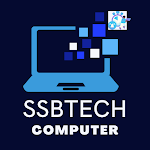Common
Security Control
You should introduce
sufficient security controls to reduce risk of your system. However this
control should not be restrictive that the damage the employees performance. Some
of the common security controls are listed below....
1. User Authentication--There are several techniques that can
identify and verify someone seeking access to your system. These include a user
name and password combination, where the password can vary in length and
include number send characters.
Digital certificate
that enables authentication through the use of an individual’s unique signing
keys.
2. Access Control--This helps to restrict your data from
others. With this outsiders can only access data and services for which they
have been authorized. These include using Network restrictions to prevent
access to other computer systems and networks. Restrictions on what can be
copied from the system and stored on pen drives, memory sticks or CDs/DVDs.
Limits on the sending and receiving of certain types of e-mail attachments.
3. Data Encryption--Encryption scrambles data and is used
to protect information that is being held on a computer, copied onto CDs or
DVDs or transmitted over a network. It uses technologies such as virtual
private networks (VPNs) and secure socket layers.
4. Firewall-- A firewall is a hardware device or
software program that prevents unwanted traffic from entering or exiting your
computer. When properly configured, these devices allow your computer to send
and receive data from the Internet and block unwanted traffic from hackers,
viruses, and other undesirable sources.
The firewall also helps
to control access between the Intranet and Internet to permit access to the
Intranet only to people who are members of the same company or organization.
5. Intrusion Detection-- These products monitor system and
network activity to spot any attempt being made to gain access. If a detection
system suspects an attack, it can generate an alarm, such as an e-mail alert,
based upon the type of activity it has identified.
6. Confidentiality/Secrecy-- Information should always be shared
among authorized persons or organizations. Information should be handed over
among such persons who are loyal to company and organization.
7. Integrity--The information must be authentic and
complete. That is, the information can be relied upon to be sufficiently
accurate for its purpose.
8. Availability-- Assurance that the systems
responsible for delivering, storing and processing information are accessible
when needed, by those who need them. As the information is the goal of
prosperity. It needs to be take care of every individual and organizations. To
keep the information safe and secure, there must be.
9. Awareness-- You should and what they can do to
develop security.
Despite the
sophistication of these controls, they are only as good as the people who use
them. A continual awareness program is a vital component of any security
policy.
Click for read on
CYBER CRIME
Whatsapp
Telegram FB Page Twitter
Instragram Our Book
You can Purchased the course and Notes from us.

